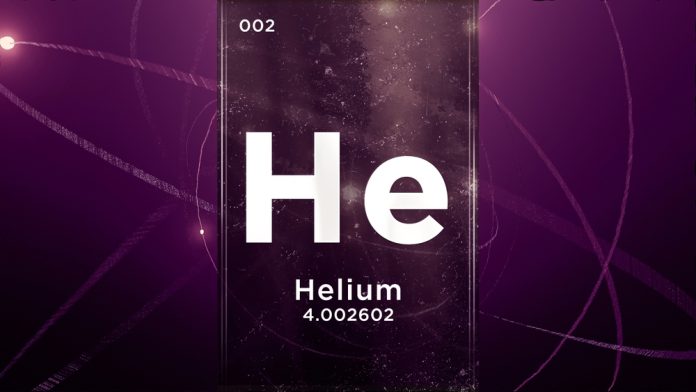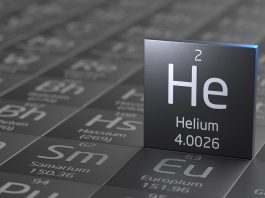Helium’s role in the green transition is extremely important. This noble gas holds a crucial position in advancing green technologies that are integral to reducing our carbon footprint.
From wind turbines to fusion reactors, helium’s role in the green transition is more significant than most realise.
Exploring the intricate connection between helium and the green transition unveils a fascinating narrative that sheds light on the vital importance of this often overlooked element in our journey towards a cleaner, more efficient tomorrow.
Why the green transition is important
The green transition is crucial for reducing carbon emissions and combatting climate change. Sustainability is at the forefront of this movement, emphasising the importance of renewable energy sources to mitigate the environmental impact of traditional energy production.
Transitioning to renewable energy is a key element in addressing climate change, as it reduces reliance on fossil fuels, which are major contributors to greenhouse gas emissions.
Renewable energy, such as solar and wind power, plays a significant role in the energy transition by providing clean alternatives to coal and oil. By harnessing these sources, we can decrease our carbon footprint and work towards a more sustainable future.
The shift towards renewable energy is essential for long-term environmental sustainability and combating the effects of climate change. Embracing renewable energy technologies isn’t only beneficial for the planet but also for future generations, ensuring a healthier and more sustainable world for all.
History of helium and its unique properties
Helium, known for its fascinating history and unique properties, has played a significant role in various technological advancements that drive sustainability efforts today.
Discovered in 1868 by French astronomer Jules Janssen and British astronomer Joseph Norman Lockyer during a solar eclipse, helium is the second most abundant element in the universe after hydrogen. Its properties include being the only element that remains liquid at absolute zero, making it crucial for cooling superconducting magnets in MRI machines and particle accelerators.
Helium’s applications extend beyond cooling; its inertness and low boiling point make it ideal for use in arc welding, deep-sea diving mixtures, and even as a lifting gas in balloons.
However, the scarcity of helium on Earth, primarily due to its lightness, which allows it to escape the atmosphere, has led to concerns about future availability.
To meet demand, helium is typically extracted as a byproduct of natural gas mining, with the US being a significant producer.
The role of helium in producing wind turbines and solar panels
Due to its unique properties and applications, helium plays a crucial role in the production of wind turbines and solar panels. Helium is utilised in the production process to enhance the efficiency of wind turbines by reducing friction and heat, ultimately leading to increased energy output.
This noble gas also contributes to the sustainability of solar panels by creating a controlled atmosphere during manufacturing, ensuring high-quality and durable panels for renewable energy systems. The use of helium in these renewable energy advancements showcases its significance in driving green technology innovation.
In wind turbines, helium improves efficiency by decreasing turbulence and vibration, enhancing the overall performance.
Likewise, in solar panel production, helium plays a vital role in maintaining a clean environment during the manufacturing process, leading to sustainable and long-lasting panels.
How helium is used in fusion reactors
Helium plays a pivotal role in enabling nuclear fusion reactions to generate clean energy. In fusion advancements, helium’s unique properties are harnessed for various critical functions.
One key role is helium containment, where it cools and confines the plasma within the reactor. This containment ensures the stability of the fusion process, contributing to plasma stability and efficient energy production.

Helium’s presence in fusion reactors is essential for sustainable power generation. The controlled release of helium during fusion reactions produces immense heat, which is then converted into electricity.
This process not only demonstrates the potential for abundant energy production but also emphasises the environmentally friendly aspect of fusion power.
Helium’s role in energy storage
With its remarkable properties, helium plays a significant role in Superconducting Magnetic Energy Storage (SMES), contributing to efficient energy storage solutions. SMES systems utilise superconducting coils that generate strong magnetic fields when cooled by liquid helium.
These magnetic fields store energy efficiently, making SMES a valuable technology for renewable energy integration.
Helium enhances energy efficiency in SMEs by minimising energy losses during electricity storage and retrieval. The use of helium in SME systems supports grid stability by providing a quick response to fluctuations in renewable energy generation. This technology aids in balancing supply and demand, ensuring a reliable power supply from renewable sources.
Helium’s uses in zero-emission transport
Helium enhances the sustainability of zero-emission transport systems, such as EVs and trains, through its crucial role in various components and technologies.
In EVs, helium batteries are used, which offer high energy density and longer lifespans compared to traditional lithium-ion batteries.
This advancement in battery technology not only supports efficient EV charging but also contributes to reducing overall emissions, promoting zero emissions in transportation.
Furthermore, in the realm of train electrification, helium plays a significant role in ensuring the smooth operation of electric trains. By facilitating the cooling of superconducting materials in train systems, helium enables efficient power transmission and sustainable transport options.
Helium’s role in quantum computing may help to improve energy efficiency
Harnessing helium in quantum computing can potentially enhance energy efficiency by revolutionizing computational processes. Quantum computing, a future technology, holds the promise of solving complex problems at unprecedented speeds, paving the way for innovative solutions in various fields.
By leveraging helium’s unique properties in quantum computing, energy efficiency can be significantly improved through optimized algorithms and enhanced computational power.
The integration of helium in quantum computing systems not only accelerates calculations but also reduces energy consumption compared to classical computing methods. This shift towards more energy-efficient processes aligns with the sustainability benefits sought in the green transition.
As quantum computing continues to advance, its application in energy-intensive industries could lead to more streamlined operations and reduced environmental impact.
Helium for a greener future
In conclusion, helium’s role in the green transition contributes to renewable energy technologies and sustainability initiatives.
Its unique properties and applications in wind turbines, solar panels, fusion reactors, energy storage systems, and zero-emission transport are essential for advancing towards a greener future.
By utilising helium in various ways, we can reduce our dependence on fossil fuels and work towards a more sustainable and environmentally friendly energy landscape.










